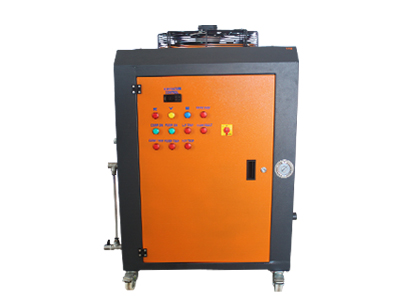CHILLER
A chiller is a machine that removes heat from a liquid coolant via a vapor-compression, adsorption refrigeration, or absorption refrigeration cycles. This liquid can then be circulated through a heat exchanger to cool equipment, or another process stream (such as air or process water). As a necessary by-product, refrigeration creates waste heat that must be exhausted to ambience, or for greater efficiency, recovered for heating purposes. Vapor compression chillers may use any of a number of different types of compressors. Most common today are the hermetic scroll, semi-hermetic screw, or centrifugal compressors. The condensing side of the chiller can be either air or water cooled. Even when liquid cooled, the chiller is often cooled by an induced or forced draft cooling tower. Absorption and adsorption chillers require a heat source to function.
Chilled water is used to cool and dehumidify air in mid- to large-size commercial, industrial, and institutional facilities. Water or liquid chillers can be liquid-cooled, air-cooled, or evaporatively cooled. Water or liquid-cooled systems can provide efficiency and environmental impact advantages over air-cooled systems.


